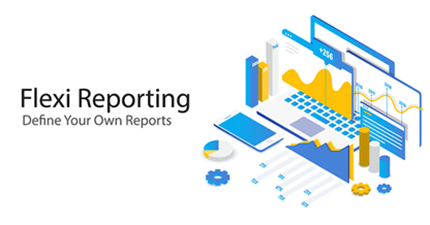
Reports in an Organisation – Is it a Bottomless Pit?
Published :

It won’t take a week to render your Financial Reports. With Flexi Financial Reporting, it can be done within minutes
Time equals money. This is something that every corporate organization knows, hence the emphasis on completing a task on time. When it comes to one of the integral functions of a business, financial reporting, it is a bit like a bottomless pit. Feed it with information, and yet when you are looking for something more specific, you are required to dedicate more time and efforts for it.
Reports are often generated for analyzing financial numbers as to where an organization stands and its way forward. Keeping aside the forecasting or the planning aspect, there goes a lot of information just for financial reporting. From real time application, a few of these tasks are possible which helps a customer generate a report. But, not with all that the customer wants (dimensions).
CHALLENGES
As one explores the intricacies in this field, there are a few evident challenges:
SWISH AND A CLICK
Now, there may not be a magic wand which can fix things with a swish and flick, but Ramco’s Dynamic Reporting Framework can definitely support in generating reports with relative ease.
Ramco’s Flexi Financial Reporting can configure different dimensions on the go, to see your results in a report. We empower the users to take charge and make use of the flexibility to modify the reporting structures by adding different dimensions, allowing mathematical expressions by way of formulae, deriving consolidated financial statements etc., wherever pertinent to their specific needs resulting in dynamic generation of desired report.
EMPOWERING USERS
With Ramco’s Dynamic Reporting framework the users can define their own reports, adding different dimensions, be it a time dimension or any other business dimensions and measures, and get instant results. Yes, the power is indeed in the hands of users.
Most ERPs will expect new report formats to be designed manually involving a lot of efforts, which can take up to 5-10 days depending on the complexity. Ramco’s Flexi Financial Reporting can help in generating a number of reports from a single screen in less than a few minutes. The optimization in the underlying reporting architecture has resulted in a drastic reduction of time while generating a report. This tool also offers a smart preview of the final outcome, while defining the report itself without actually waiting for generating the final report, thus allowing the users to visualize and make the relevant changes to dimensions before they actually go ahead to generate their final report.
Ramco’s Flexi Financial Reporting allows one to add several business dimensions while defining or creating a report. These can be used to compare the actuals with the budget across dimensions as well as compare it on the time dimension, along with a facility to drill down to the source transaction. Thus, enabling organizations to save time and stay ahead of the curve.
Enterprise asset management (EAM) involves the management of mission critical assets of an organization throughout each asset's lifecycle. EAM is used to plan, optimize, execute, and track the needed maintenance activities with the associated priorities, skills, materials, tools, and information. The aim is to optimize the quality and utilization of assets throughout their lifecycle, increase productive uptime and reduce operational costs.
Enterprise asset management (EAM) involves the management of the maintenance of physical assets of an organization throughout each asset's lifecycle. EAM is used to plan, optimize, execute, and track the needed maintenance activities with the associated priorities, skills, materials, tools, and information.
The software helps in effective maintenance of assets through preventive, predictive, shutdown and breakdown maintenance strategies. The system also helps enterprises mitigate equipment risks by enhanced safety standards. The streamlined operations and improved asset performance helps organizations increase their investment effectiveness.
EAM is important because it helps organizations track, assess, manage and optimize asset quality and reliability. Asset intensive Organizations have hundreds, thousands, even millions of assets which needs to be maintained to maximize / optimize life of these assets to increase the return on investment.
The key features of effective EAM are:
Asset Intensive companies under the following Industries :
Contact us for a meeting and schedule a demo
This differs on case to case basis, based on the type of installation and unique industry specific requirements. Contact us for a meeting and schedule a demo.
This differs on case to case basis, based on the type of installation and unique industry specific requirements. Contact us for a meeting and schedule a demo.
Stay Connected, follow us on LinkedIn / Twitter to know more about EAM Software latest trends.

All Rights Reserved. © Copyright 2024. Ramco Systems.